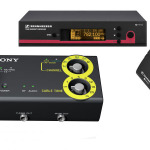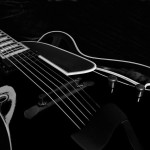Wi-Fi Guitar 2014
Determining the differences and the advantages and disadvantages between “Wireless (both Digital & FM) and Wi-Fi and establishing an opinion on whether any form of digital sound replication can offer a competitive edge to an analogue valve sound is a little complex.
Let’s say the warm rich tones of an analogue valve amp come second to none but the flexibility and immense variety of uses digital and Wi-Fi options create are worth taking note of.
Understanding Frequency
To get the basic concept of how a sound is measured and transmitted here are some facts and understandings. Frequency is measured in the number of sound vibrations in one second. A healthy ear can hear sounds of very low frequency, 20 Hertz (or 20 cycles per second), to a very high frequency of 20,000 Hertz.
The lowest A key on the piano is 27 Hertz. The middle C key on a piano creates a 262 Hertz tone. The highest key on the piano is 4186 Hertz.
Sound energy travels in waves and is measured in frequency and amplitude.
The energy in a sound wave can be measured using Decibels.
Amplitude measures how forceful the wave is. It is measured in decibels or dBA of sound pressure. 0 dBA is the softest level that a person can hear. Normal speaking voices are around 65 dBA. A rock concert can be about 120 dBA.
There are different ways to transmit a guitar sound.
- 1/4 Jack Plug Guitar to Amp – Traditional method
- Wireless Devices – FM or Digital options
- Wi-Fi – Requires MIDI
Wi-Fi & Wireless the Differences
A wireless guitar transmits information as an audio signal. In recent years a wireless guitar system now has a digital option with products from wide range of companies such as Line 6 and Shure.com. Prior to and as well as this digital option an audio signal is tranmsitted with an FM signal (analogue), which is the encoding of information in a carrier wave by varying the instantaneous frequency of the wave. This type of wireless system is available from companies like Sennheiser.com and even Shure.com who provide both digital and analogue options.
A Wi-Fi guitar system needs to be a MIDI signal, where the bandwidth is small and lite enough to be transported via Wi-Fi.
There are two main reasons why an analogue or digital sound wave will not perform as well as its MIDI counterpart. The first being a wav. file is too heavy which makes it slow and the second being Wi-Fi will not successfully transmit the full frequency spectrum that a healthy ear can hear.
From a MIDI perspective the notes played that make up the sine wave of the frequency spectrum will be converted into note on note off information before transportation, this is lite and fast and furthermore when it is interrupted by a guitar synth or sound card it will replicate the full audio spectrum as the whole sound wave can be transmitted.
Unless you use a MIDI guitar, there are very few systems that offer Note on Note off conversion from the guitar pick-up. The Roland Gr 55 and other V Guitar products from Roland do the analogue to digital conversion in the processor unit of the pedal so there is no tangible Wi-Fi option with this range of products just yet, though they are highly respected for their digital sounds and sound modelling quality. The Fishman TriplePlay on the other hand has a hexaphonic pick-up with an analogue to digital conversion unit on the guitar which enables it to transmit with Wi-Fi.
Wi-Fi Devices – Note on Note off
Puc
The PUC is a wireless MIDI interface designed specifically for iOS devices. The PUC allows you to wirelessly connect any MIDI device (keyboard, DJ controller, drum pad, floor pedal controllers – for guitars, etc.) directly to your iPad. PUC can also work with any platform that supports a MIDI connection over WiFi.
Puc communicates directly to the iPad via WiFi directly as a device, no “host” WiFi network is necessary. PUC uses an open standard for Core MIDI over WiFi. Once your legacy MIDI signals are translated into Core MIDI by the PUC, any Core MIDI compatible app can recognize it.
PUC Connect is the app designed to establish your iPad/iPhone connection to the PUC hardware. PUC Connect also monitors your PUC hardware for battery status, firmware updates, and connection protocol selection.

Sonuus
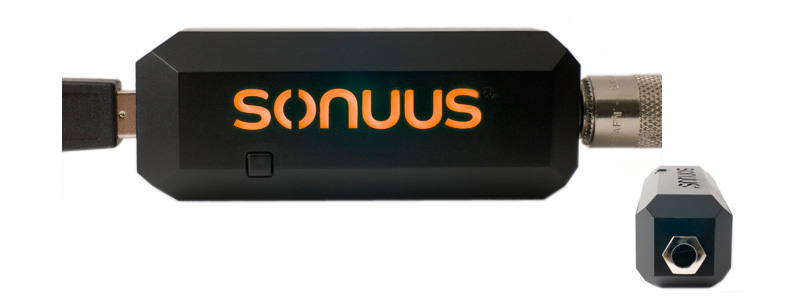 Continuing from the appeal of the G2M and B2M, the i2M musicport combines the features of both these units (to support both guitar and bass) with an optimised USB interface for even faster MIDI performance. Featuring extended MIDI features and configurability to satisfy the most demanding users, and a high-impedance audio interface that won’t suck the tone from your instrument, the i2M musicport is the new way to connect your musical instruments to your computer.
Continuing from the appeal of the G2M and B2M, the i2M musicport combines the features of both these units (to support both guitar and bass) with an optimised USB interface for even faster MIDI performance. Featuring extended MIDI features and configurability to satisfy the most demanding users, and a high-impedance audio interface that won’t suck the tone from your instrument, the i2M musicport is the new way to connect your musical instruments to your computer.
Designed particularly for guitar and bass, it works with most musical instruments including wind instruments and the human voice. Now you can record great-sounding tracks and play synthesizers and samplers how you have always wanted to: by using your favourite instrument.
Ultra-Fast Monophonic MIDI Conversion
Although latency is unavoidable when converting musical pitch into MIDI messages, the unique technology used in the i2M musicport reduces this to a minimum. Not only is the MIDI conversion extremely fast, but accurate and robust. In fact, the pitch-bend detection of the i2M musicport is more accurate than many popular guitar tuners!
Fine nuances of your playing are captured by the i2M musicport: note velocity is determined from how hard you play; and subtle vibrato and bends are converted to ultra-accurate pitch-bend messages with virtually no latency. Everything from the emotional subtlety of a ‘cello solo to the most extreme use of a guitar’s whammy bar are tracked flawlessly.
The optimised USB MIDI interface further minimises latency by intelligently managing data packets and avoiding the inherent delays in the traditional MIDI hardware protocol.
i2M Musicport
Hi-Z USB audio interface
MIDI converter
Designed for guitar/bass/voice
Really is plug-and-play
Fast & accurate
Near zero latency
£120
The following two products have already been mentioned in previous articles, however they are both significant products within the Wi-Fi Guitar area.
Livid Instruments Guitar Wing
The Guitar Wing provides an expressive, MIDI control surface designed for guitar and bass players. It easily attaches to any electric guitar or bass and communicates wirelessly to your computer or USB-MIDI host. You can use the Guitar Wing with the bundled effects plug-in, WingFX™, or dive into the vast world of software, controlling programs like Logic, Garage Band, Ableton Live, Guitar Rig, Reason, and many others.
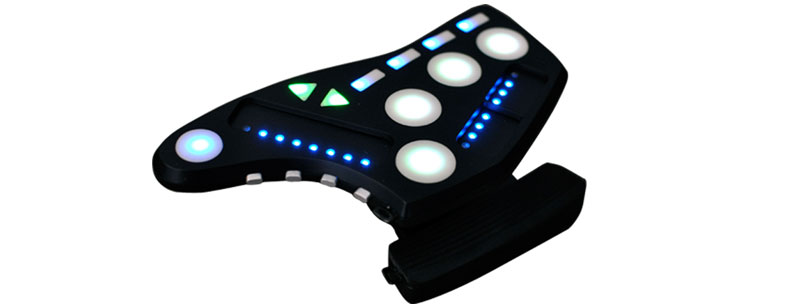
Fishman TriplePlay
The controller’s durable, low profile design fits neatly behind your guitar’s bridge, and it’s wireless, so no heavy 13-pin cables to trip over. The rechargeable Lithium Ion battery has over 20 hours of life – plenty of juice for a full day of composing and a night of gigging. Accessible onboard menu navigation buttons, volume control, and the guitar/mix/synth switch make it easy to change settings or instruments during performances.
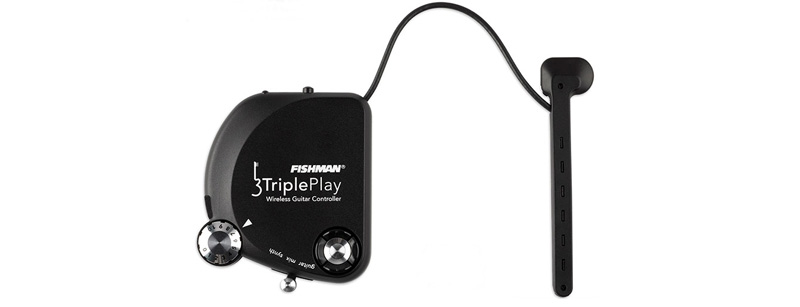
en.lebirne.com/guitar to MIDI shootout


